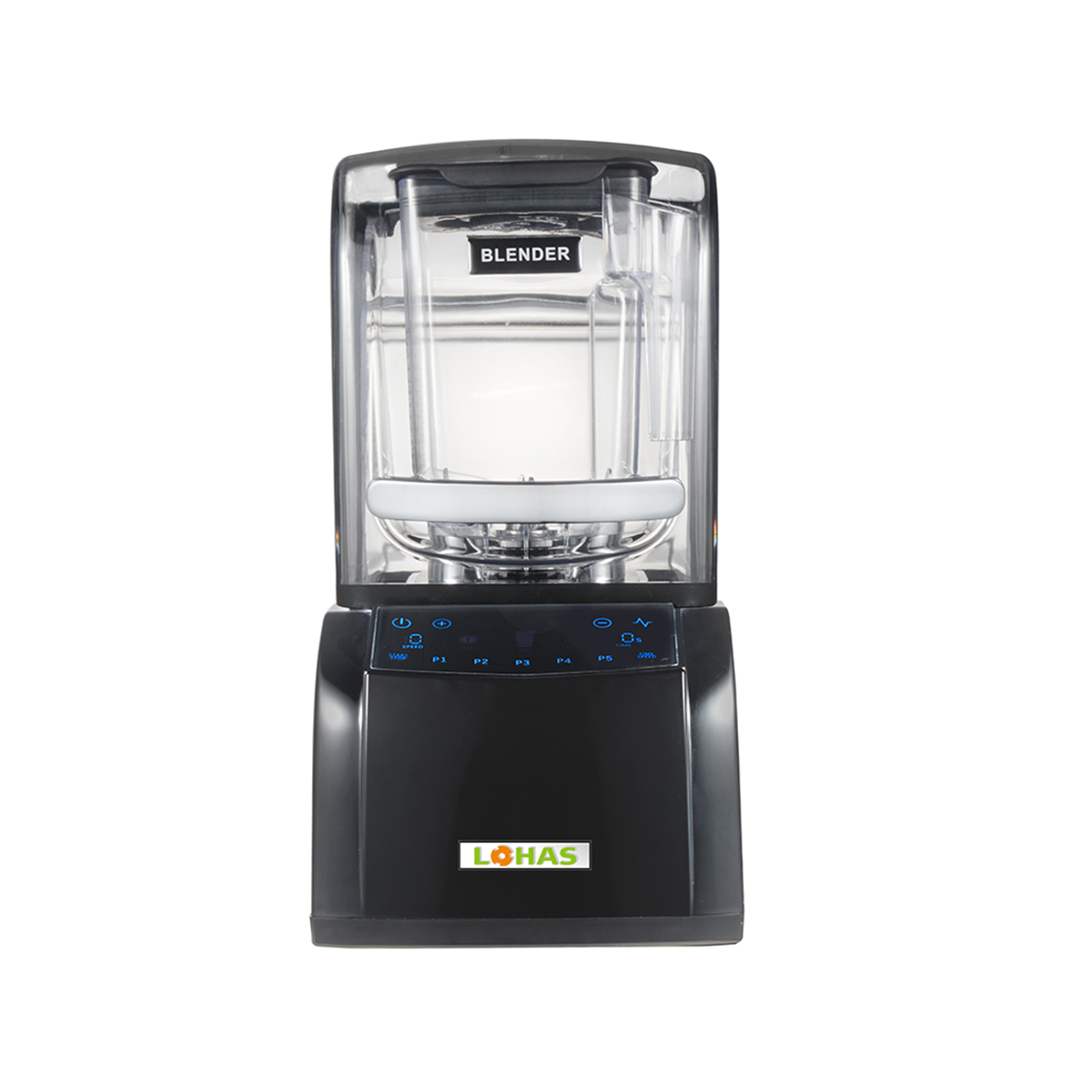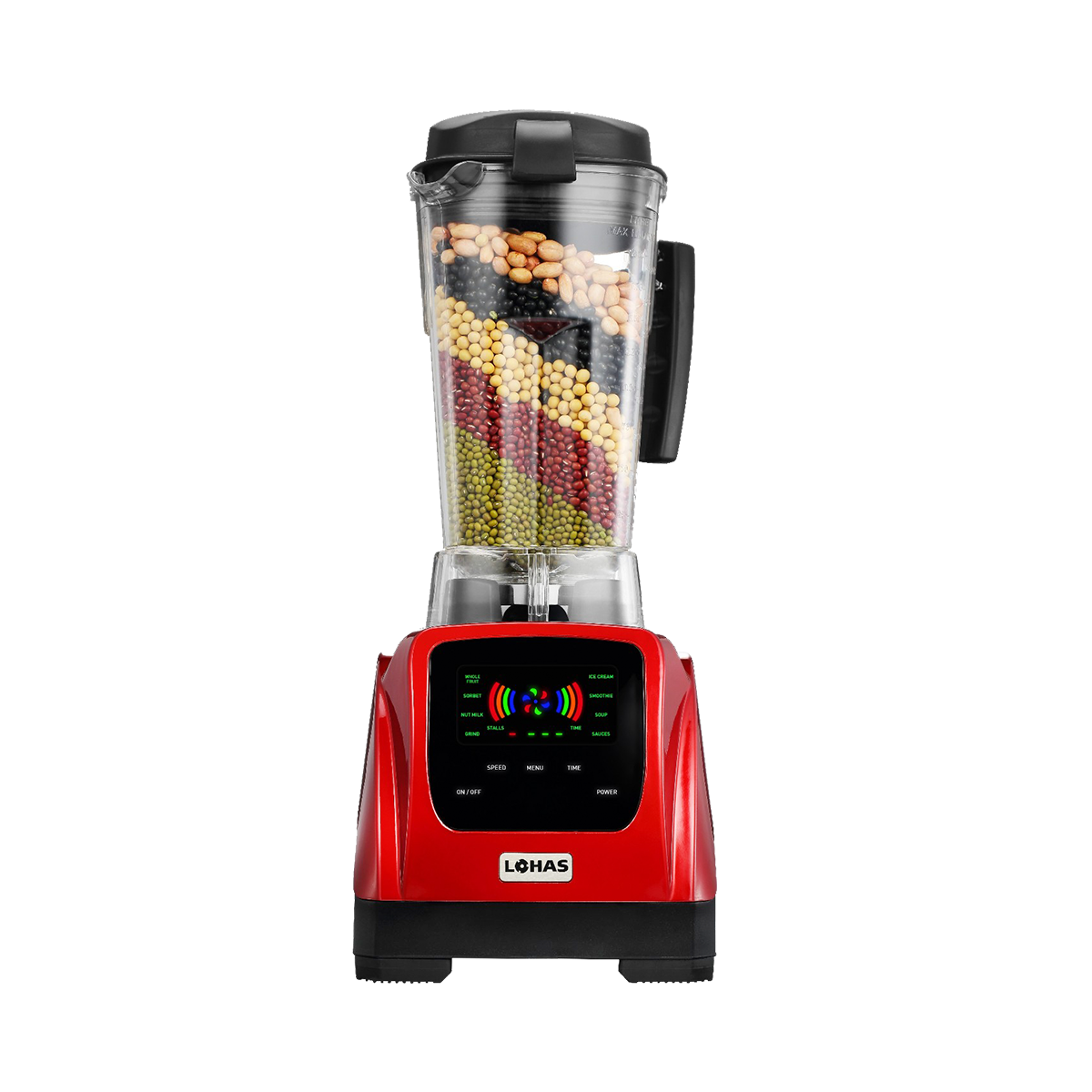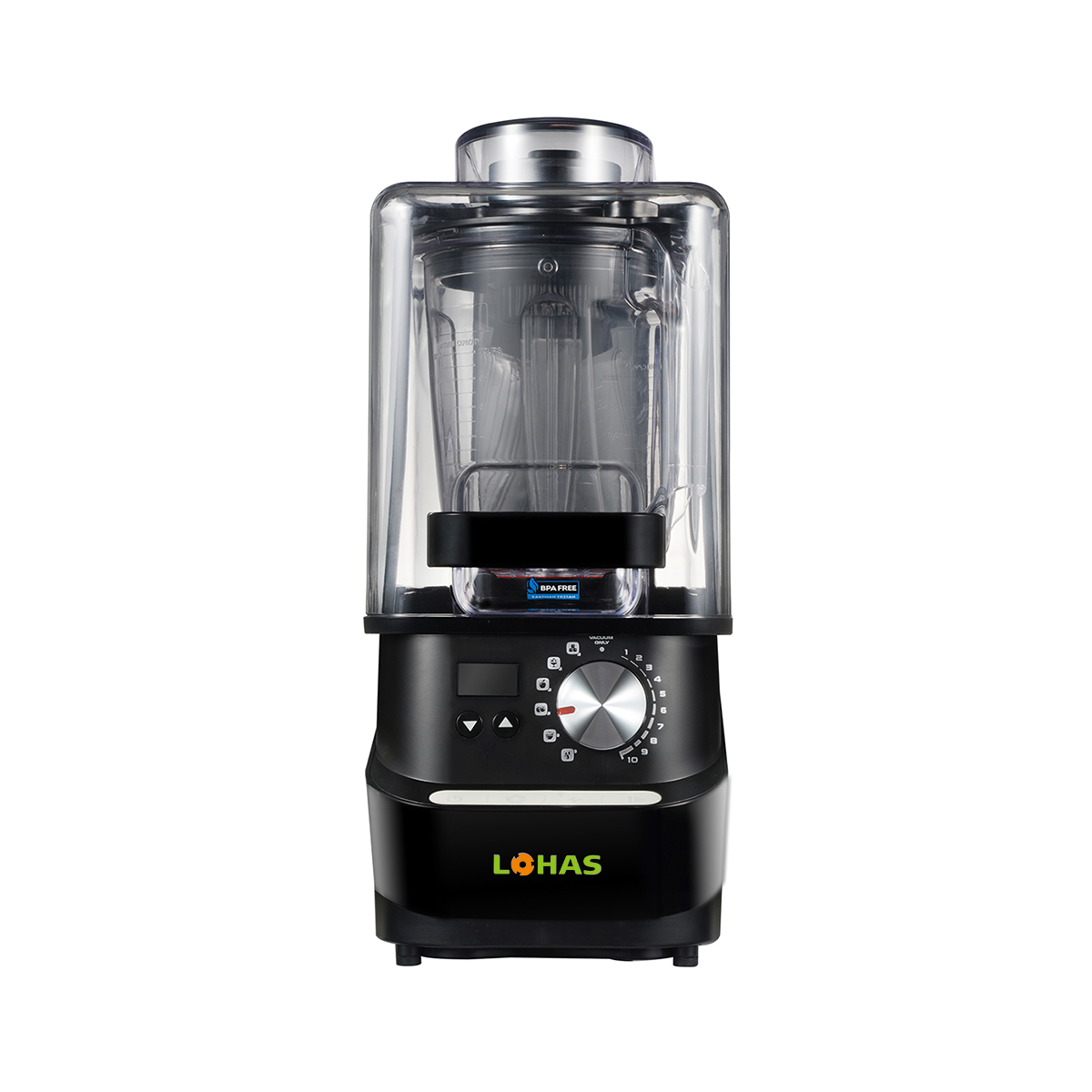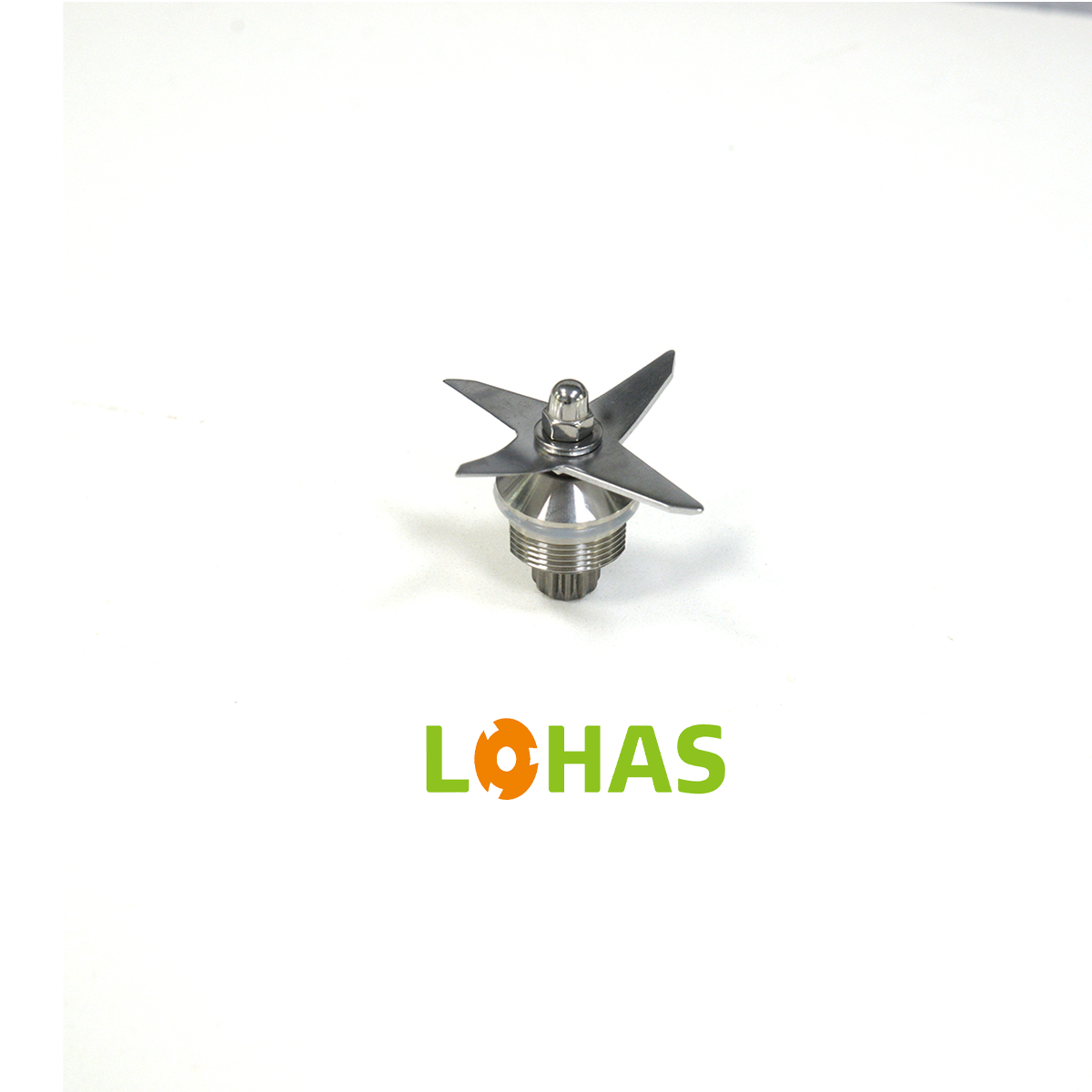The preservation of nutrients during blending has become a critical concern for health-conscious consumers seeking to maximize the nutritional value of their daily smoothies. Modern smoothie blender technology has evolved significantly to address oxidation, heat generation, and cellular breakdown that can compromise essential vitamins and minerals. Understanding how these advanced appliances maintain nutrient integrity while delivering smooth, consistent textures requires examining the intricate engineering principles behind blade design, motor efficiency, and processing techniques that distinguish premium blending equipment from conventional alternatives.
The Science Behind Nutrient Preservation in Blending
Cellular Structure and Nutrient Release Mechanisms
When fruits and vegetables undergo blending, their cellular walls break down through mechanical force, releasing previously encapsulated nutrients into the liquid matrix. This process, while beneficial for bioavailability, simultaneously exposes sensitive compounds like vitamin C, folate, and antioxidants to oxygen and light. High-quality smoothie blender systems minimize this exposure through rapid processing cycles that reduce the time nutrients spend in contact with air. The key lies in achieving complete cellular disruption without prolonged oxidation periods that degrade water-soluble vitamins.
Research demonstrates that the mechanical breakdown of plant cell walls can actually enhance the absorption of certain nutrients, particularly carotenoids and lycopene, which become more bioavailable when released from their cellular matrices. However, this enhanced availability comes with the trade-off of increased vulnerability to environmental factors. Professional-grade blending equipment addresses this challenge through precision engineering that maximizes nutrient extraction while minimizing degradation through controlled processing environments.
Oxidation Control and Enzyme Deactivation
Oxidation represents the primary threat to nutrient stability during blending, as exposure to atmospheric oxygen triggers enzymatic reactions that break down vitamins and antioxidants. Advanced smoothie blender designs incorporate features that limit oxygen incorporation during processing, such as sealed blending chambers and vacuum-assisted operation modes. These technologies create low-oxygen environments that preserve heat-sensitive nutrients while maintaining the natural flavors and colors of ingredients.
Enzymatic browning, caused by polyphenol oxidase activity, not only affects visual appeal but also indicates the degradation of beneficial compounds. Effective blending systems combat this through rapid processing that minimizes enzyme contact time and temperature control mechanisms that prevent the thermal activation of degradative enzymes. The result is nutrient retention levels that can exceed 90% for most vitamins when proper techniques are employed.
Advanced Blade Technology and Motor Systems
Precision Blade Engineering for Optimal Nutrient Extraction
The geometry and metallurgy of blender blades play crucial roles in nutrient preservation through their impact on processing efficiency and heat generation. Multi-tiered blade systems with varying angles and cutting edges ensure thorough ingredient processing without excessive friction that generates heat. Premium smoothie blender models feature hardened stainless steel blades designed to maintain sharp edges over extended use, reducing the energy required for effective blending and minimizing thermal stress on nutrients.
Blade positioning and rotation patterns influence the creation of vortex flows that ensure uniform ingredient distribution while preventing hot spots that can develop in less sophisticated designs. The precise engineering of these components allows for complete ingredient processing in shorter time frames, which directly correlates with higher nutrient retention rates. This efficiency translates into smoother textures and better flavor profiles while preserving the maximum nutritional value of ingredients.
Motor Power and Speed Control Systems
High-torque motor systems enable efficient blending at lower speeds, reducing the heat generation that occurs when underpowered motors must operate at maximum capacity to achieve desired results. Variable speed controls allow users to customize processing intensity based on ingredient hardness and desired texture, optimizing nutrient preservation for different types of produce. smoothie blender systems with intelligent motor management can automatically adjust power output based on load resistance, ensuring consistent results without unnecessary energy expenditure that converts to heat.
Brushless motor technology, commonly found in professional-grade blenders, operates more efficiently and generates less heat compared to traditional brushed motors. This improved efficiency translates directly into better nutrient preservation, as lower operating temperatures prevent the thermal degradation of sensitive compounds. Additionally, these motors provide more consistent torque delivery, ensuring uniform blending without the power fluctuations that can create processing inconsistencies.
Temperature Management and Processing Techniques
Heat Generation Mitigation Strategies
Thermal management represents a critical factor in preserving heat-sensitive nutrients during the blending process. Extended blending sessions can elevate ingredient temperatures to levels that degrade vitamins B and C, along with beneficial enzymes present in raw fruits and vegetables. Modern smoothie blender designs incorporate cooling systems and thermal monitoring to maintain optimal processing temperatures throughout the blending cycle.
Pulse blending techniques, where processing occurs in short bursts with rest periods, allow natural cooling between cycles and prevent the accumulation of heat that occurs during continuous operation. This approach maintains ingredient temperatures closer to ambient levels while still achieving thorough processing. Some advanced systems include temperature sensors that automatically pause operation when thermal thresholds are approached, ensuring consistent nutrient preservation regardless of processing duration.
Processing Time Optimization
The relationship between processing time and nutrient retention follows a curve where initial improvements in texture and bioavailability are offset by increased degradation with extended blending. Optimal processing times vary based on ingredient type, with leafy greens requiring different approaches than fibrous fruits or frozen components. Understanding these variables allows users to maximize nutritional benefits while achieving desired consistency and flavor profiles.
Pre-programmed blending cycles designed for specific ingredient combinations help users achieve optimal results without guesswork. These programs consider factors such as ingredient density, fiber content, and processing requirements to deliver consistent results while preserving maximum nutritional value. The automation of these processes removes the variability associated with manual operation and ensures reproducible outcomes.
Ingredient Preparation and Blending Sequences
Strategic Ingredient Loading and Processing Order
The sequence in which ingredients are added to a smoothie blender significantly impacts both processing efficiency and nutrient preservation. Liquid components should typically be added first to create the necessary vortex for effective blending, followed by softer fruits and vegetables, with frozen or harder ingredients added last. This approach ensures smooth processing without requiring excessive blending time that can degrade nutrients through prolonged exposure to mechanical stress and oxygen.
Pre-cutting ingredients to appropriate sizes reduces processing time and mechanical stress, allowing blenders to achieve desired textures more quickly and with less heat generation. Frozen ingredients should be partially thawed when possible, as this reduces the energy required for processing and minimizes the thermal shock that can affect nutrient stability. Strategic timing of ingredient addition during the blending cycle can also help maintain optimal temperatures and processing conditions.
pH Balance and Antioxidant Preservation
The natural pH levels of blended ingredients influence nutrient stability, with certain vitamins showing increased stability in acidic environments while others prefer neutral or alkaline conditions. Adding citrus fruits or other natural acidic components can help preserve vitamin C and other antioxidants by creating an environment that inhibits oxidative degradation. This natural preservation method works synergistically with mechanical processing techniques to maintain nutritional integrity.
Antioxidant-rich ingredients such as berries and leafy greens contain natural compounds that help protect other nutrients from degradation during processing. Strategic combination of these protective ingredients with more vulnerable components can enhance overall nutrient preservation. Understanding these interactions allows for the creation of smoothie recipes that maximize both nutritional value and stability over time.
Quality Indicators and Nutritional Assessment
Visual and Sensory Markers of Nutrient Retention
Color preservation serves as an excellent indicator of nutrient retention during blending, as the compounds responsible for vibrant colors in fruits and vegetables often correlate with antioxidant and vitamin content. Smoothies that maintain bright, natural colors typically indicate successful preservation of these beneficial compounds. Conversely, rapid browning or color fading suggests oxidative processes that may have compromised nutritional value.
Texture consistency and natural flavor retention also provide insights into processing quality and nutrient preservation. Properly blended smoothies should maintain the natural taste profiles of their ingredients without the cooked or processed flavors that indicate thermal damage. Smooth, uniform textures without fibrous remnants suggest effective cellular breakdown without excessive processing that could degrade sensitive nutrients.
Timing and Storage Considerations
The nutritional quality of smoothies begins to decline immediately after blending due to ongoing oxidative processes, making immediate consumption ideal for maximum nutrient retention. When storage is necessary, proper techniques such as refrigeration in sealed, dark containers can slow degradation rates. Some nutrients, particularly vitamin C, show rapid decline within hours of blending, while others remain stable for longer periods when properly stored.
Adding natural preservatives such as lemon juice or maintaining acidic pH levels can extend the nutritional stability of stored smoothies. However, the most effective approach remains consuming blended beverages as soon as possible after preparation to capture the maximum nutritional benefit. Understanding these time-sensitive factors allows users to plan their blending schedules for optimal health benefits.
FAQ
Does blending destroy the fiber content of fruits and vegetables
Blending does not eliminate fiber but rather breaks it down into smaller particles that remain suspended in the liquid. While the physical structure changes from intact cellular walls to fragmented pieces, the total fiber content remains essentially unchanged. However, the altered form may affect how the body processes this fiber, potentially reducing some of the blood sugar regulation benefits associated with whole fruit consumption. The fiber still provides digestive benefits and helps maintain satiety, though the effect may be somewhat diminished compared to eating whole produce.
How long should ingredients be blended to maximize nutrient retention
Optimal blending time varies by ingredient type and desired consistency but generally ranges from 30 seconds to 2 minutes for most smoothie combinations. Leafy greens typically require 45-60 seconds for complete breakdown, while softer fruits need only 20-30 seconds. The key is achieving smooth consistency without over-processing, which can generate heat and increase oxidation. Using pulse techniques with 10-15 second intervals allows for better temperature control and helps prevent nutrient degradation while still achieving thorough blending.
Can adding ice help preserve nutrients during blending
Adding ice can help maintain lower temperatures during blending, which supports nutrient preservation by reducing thermal degradation of heat-sensitive vitamins. The cooling effect of ice counteracts the heat generated by friction during the blending process, helping to keep ingredient temperatures closer to optimal levels. However, too much ice can require longer blending times to achieve smooth textures, which may offset some of the temperature benefits. The ideal approach involves using moderate amounts of ice or frozen fruits to provide cooling while maintaining efficient processing times.
Are there specific combinations of ingredients that enhance nutrient preservation
Certain ingredient combinations can indeed enhance overall nutrient preservation through synergistic effects. Pairing vitamin C-rich fruits like citrus or berries with other ingredients helps protect against oxidation due to the antioxidant properties of ascorbic acid. Adding healthy fats from sources like avocado or nuts can improve the absorption of fat-soluble vitamins while providing natural preservation effects. Combining ingredients with complementary pH levels can also create more stable environments for sensitive nutrients, extending their viability after blending.







